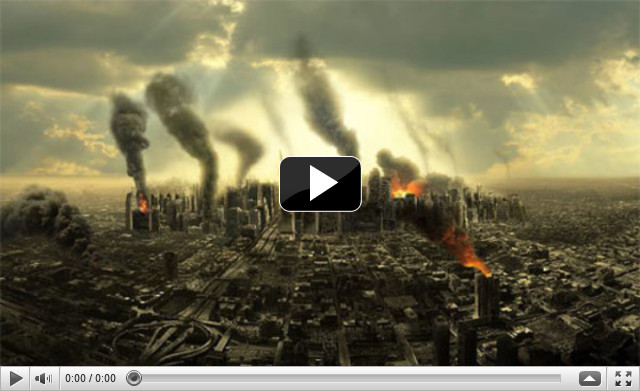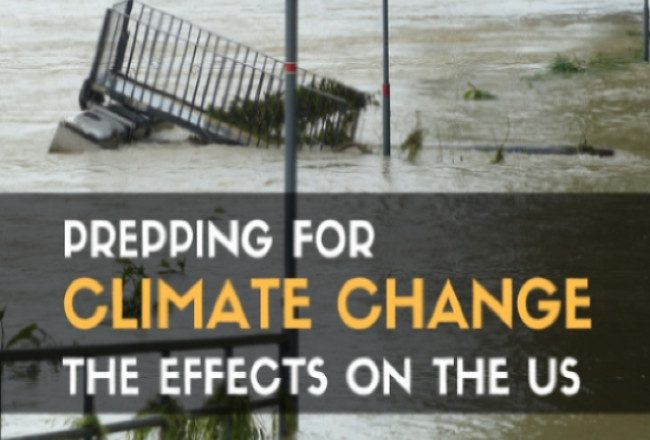Climate change is a general term that’s often associated with apocalyptic events that might happen in the distant future. The truth is that climate change is already having wide-ranging effects, and the effects of climate change will get worse in the not-so-distant future. In most cases, climate change will just increase the intensity of events that practical preppers already prepare for, like floods, wildfires, and storms. Prepping for climate change is a natural extension of prepping for localized disasters, just on a broader scale. Here are some of the effects of climate change for the US and how to prepare for them.

Scientists have been able to create a range of possible future temperatures, and for the year 2050, it ranges from 2.5 – 4.5 degrees Fahrenheit above normal temperatures. If we keep up our current rate of carbon dioxide emissions, it’ll be closer to the higher end. We’re already seeing record high temperatures – 2016 was the hottest year since people started keeping track of global temperatures in the 1880s.
Top 3 Effects of Climate Change for the US
1. Rising seas
Increasing temperatures area causing polar ice to melt and the ocean to expand as it sucks up heat. Experts predict that by 2050, global sea levels will have risen between about half a foot to a foot above sea level in the year 2000. For coastal areas, this means a lot more frequent and intense flooding during storms.
How to prepare: Analyze a flood map for your local area, identify your risk of coastal flooding, and create an evacuation plan in case it does flood. Check here to see flood maps for your local area:
- FEMA – http://msc.fema.gov/portal
- Climate Central – http://riskfinder.climatecentral.org/
2. Changing water supply
Future amounts of rainfall for Spring, Fall, and Winter will generally increase in the northern US and decrease in the southern US. Most of the US will have less rainfall during the summer, and overall rains will get more intense. Combined with higher temperatures in the future, soils will dry quicker between rains, reducing the amount of water we can collect and use. Also, as carbon dioxide collects in the atmosphere, plants will be able to use that carbon dioxide to grow quicker and use more water from the soils.
How to prepare: Rainwater harvesting is good for the environment AND a great water supply for emergencies. You can find rain barrels that range from 50 gallons to 5000 gallons online. One of the more common rain barrels you will come across is the re-purposed blue 55 gallon drum. Also consider planting native vegetation instead of regular lawn grass or installing a rain garden to keep water in your ground and not in the storm drain.
3. More extreme weather
More extreme weather will mean larger wildfires, more intense floods, more intense hurricanes, and stronger regular storms. These are already things that a practical prepper might be prepared for, but climate change will increase the risk of all of these events.
How to prepare: Research what type of extreme weather is the most likely in your area. Make your home more resilient by buying a gas-powered generator or installing a solar panel system. Clear gutters to prevent water damage during downpours and clear flammable debris away from your house to prevent fueling a wildfire. This website can help you find out the risks in your state: http://statesatrisk.org/
The Final Word
The effects of climate change will be profound, but many of the possible impacts are things that practical preppers are already preparing for. If you’re interested in learning more about climate change and how risks in your local area might change, click on one of the links below.
- NY Times – http://nyti.ms/1XnMRRr
- NASA – http://climate.nasa.gov/effects
Stay informed and always be prepared.

source : AC



